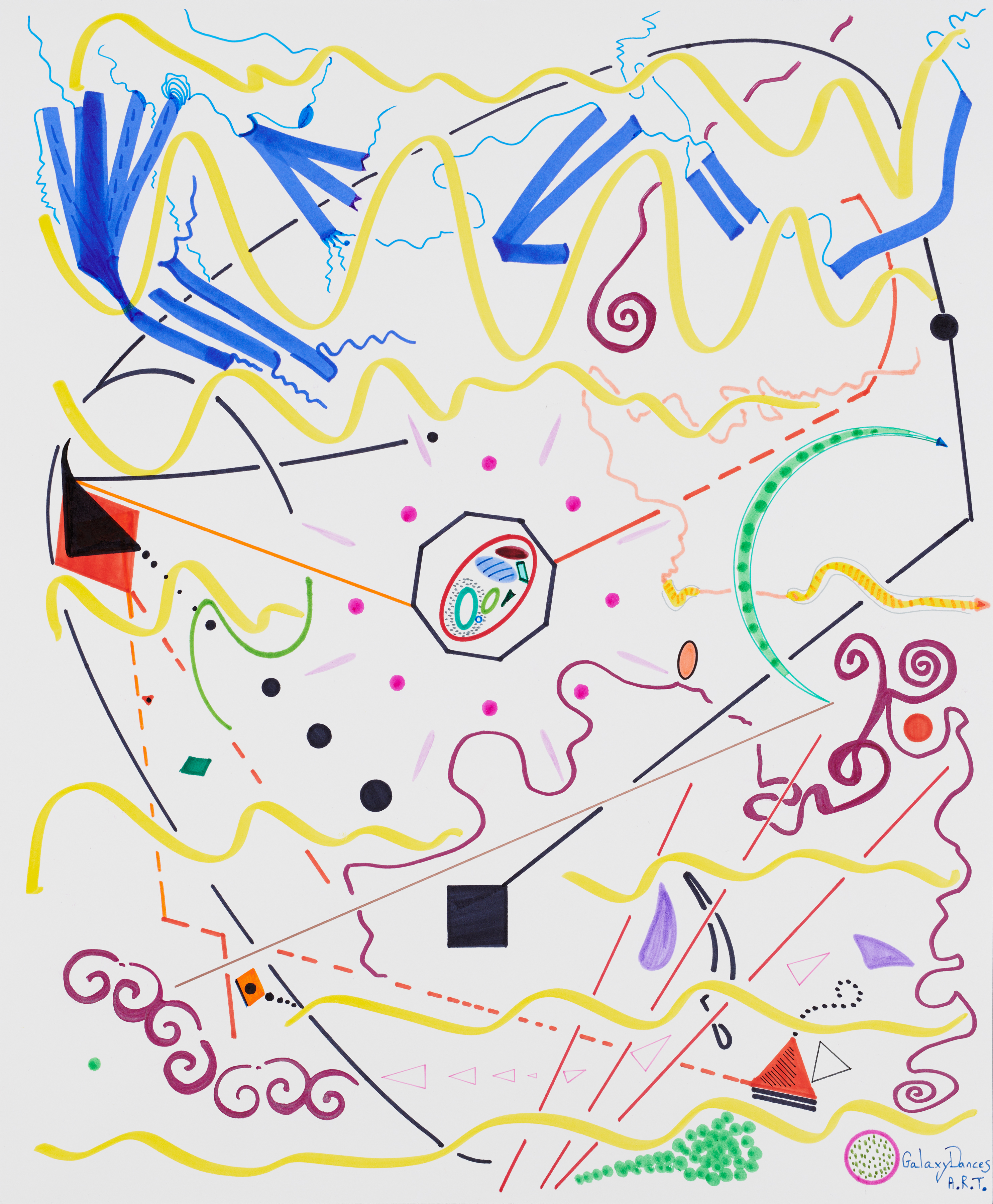3+pic.2+E.H.4(3 Ebcl, 4 bcl)/4.3Ctpt.3[btbn].1/3perc/Timp./hp/Pno./str
Commissioned and premiered by the National Symphony Orchestra,
Mstislav Rostropovich conducting, 6 May 2004
Duration: 12'

Recording of the Southern Methodist University Wind Ensemble playing the band version of GALAXY DANCES, which, in the band version is called DANCING GALAXY. The composition is identical except that the orchestral version has the added string colors.
Galaxy Dances was composed under a commission from the National Symphony Orchestra supported by a grant from Leonard and Elaine Silverstein in honor of Mstislav Rostropovich. The score, dedicated "with admiration and gratitude to Slava, Leonard and Elaine Silverstein, Uli Bader and the National Symphony Orchestra," calls for piccolo, 3 flutes. 2 oboes, English horn, 4 clarinets, bass clarinet, E-flat clarinet, 2 bassoons, contrabassoon, 4 horns, 3 trumpets, 3 trombones, tuba, timpani, crotales, marimba, vibraphone, xylophone, glockenspiel, small and large triangles, claves, 2 suspended cymbals, extra-large tam-tam, 2 conga drums, 2 bongos, extra-large bass drum, piano, celesta, harp, and strings.
Duration 12 minutes.
Galaxy Dances is the fifth work by Augusta Read Thomas to be performed by the National Symphony Orchestra, the third introduced into the orchestra's repertory by Mstislav Rostropovich, and the third commissioned and given its world premiere by the NSO.
Galaxy Dances opens in the lowest register of the orchestra in a timeless, floating, and gradually rising tune, which for a brief moment unfolds an impression of the massive, enduring universe. A timeless galaxy is upon us but steadily this music reaches upward and gains momentum, pushing through majestic, fanfare-like music, until it arrives at a driving, relentless dance. This is Galaxy Dance I: punchy repeated rhythms propel the dance while a counter tune flings hits against the forceful rhythm; all the while, brass fanfares challenge the flow, always asymmetrically, and with great passion. This "drama" is briefly interrupted by a florid and fiery solo in the clarinet, before it returns and surges to its final climax. Galaxy Dance I is over.
Immediately a Second Dance begins. This is also rhythmic in nature, and starts in a unison rhythm between the piano and the horns, with accents thrown in by the lower strings, in intense down-bow strikes. The earlier alarming clarinet solo (from Galaxy Dance I) now reappears in transformed guise played by the violins and oboes above the energized, lower, rhythmic pulse. The motor rhythms are never the same twice, imparting a restless energy.
Galaxy Dance III is characterized by a long trumpet solo, against which the orchestra passionately spins a web of counterpoints. It is worth stating here that the core of this entire composition's soul is found not primarily in rhythm or harmony, but in counterpoint — not simply in its conventional musical sense as the art of combining melodies, but in a rhetorical sense as the evocation of opposition. Counterpoint, I believe, is much more than a matter of texture or technique: it is this music's central metaphor.
The concertmaster, in a long violin solo, controls Galaxy Dance IV. This dance is expressive, graceful and colorful, always employing the orchestra in a wealthy tapestry of sounds supporting the soloist. When the violin solo ends we hear a brief rise from the lowest registers of the orchestra before Galaxy Dance V begins. This final dance features the cello section and the timpani in a funky, insistent, asymmetrical groove. A coda, in the lowest register of the orchestra, suggests close, but is overwhelmed by yet another blazing big bang.
— Augusta Read Thomas

To obtain examination or performance material for any of
Augusta Read Thomas's works, please contact G. Schirmer Inc..
